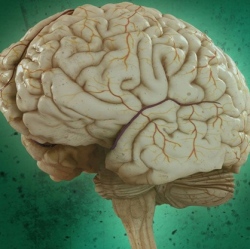
Anxious people tend to perceive their world in a more threatening way. Now, a team of neuroscientists have shed new light on why the brains of anxious individuals tend to misallocate memory resources to process threat-related information.
“Our findings may help explain the reasons why people continue to worry, ruminate, stay vigilant, or feel distressed long after a negative event occurs,” remarked led researcher Daniel M. Stout of the VA San Diego Healthcare System.
“Anxiety and depressive disorders are very common, challenging to treat, and pose an enormous burden on public health. Having an anxious personality is associated with developing future psychological disorders,” Stout explained.
“We were interested in this topic because we do not fully understand why individuals with an anxious disposition, like those with an anxiety or depressive disorder, experience high levels of emotional distress in the absence of immediate threat, and spend an excessive amount of time thinking about potential dangers in objectively safe situations.”
“These types of symptoms are particularly pernicious because they inflict their damage when we need to be focusing on the task-at-hand or at times when we don’t want them to (e.g., during a meeting at work, talking to loved ones, when trying to fall asleep at night). If we can understand what underlies these symptoms, and the brain mechanisms involved, we may be better able to reduce the suffering that many people with high levels of anxiety report.”
“Earlier work by our group using EEG technology suggested that this might reflect problems with how anxious individuals process threat-related information in working memory,” Stout explained. “Working memory is a short-term memory system that guides on-going thoughts and behaviors. It is the memory system involved in helping us remember things while we do a task, like remembering a phone number while dialing it.”
“If threat-related information gains access to or ‘contaminates’ working memory, it can exert a negative influence on our thoughts and actions. For instance, viewing an e-mail informing you that a bill is due can result in increased anxiety and intrusive thoughts about financial troubles; triggering a chain-reaction of uncontrolled worry that spans the entire day.
“One other important aspect of working memory is that its capacity is limited, so we can only hold a finite amount of information online in working memory at any given time,” Stout said. “So, if your working memory is ‘working’ on the worry-related thoughts, then less working memory capacity is available to attend to tasks important for your job or activities you are trying to complete.”
“The goal of our study was to use functional magnetic resonance imaging (fMRI) to understand how different regions of the brain may be involved in allowing threatening information to enter working memory unnecessarily in people who tend to be anxious,” Stout said.
In the study of 81 young adults, Stout and his colleagues observed that more anxious individuals were more likely to allocate working memory resources to threat-related information. This misallocation was linked to heightened reactivity in the amygdala, which is located deep in the brain and is known to play a key role in anxiety disorders.
“We found evidence that anxious individuals devoted more brain processing resources, especially in parts of the brain involved in working memory such as the prefrontal and parietal cortex, to threat stimuli that they were supposed to ignore rather than remember,” Stout explained. “This suggests that while non-anxious individuals can successfully prevent this threat information that is not related to the task at hand from entering working memory, anxious individuals are not effectively ignoring this information.”
“Thus, even threats that are to be ignored or are not relevant for completing the task at hand occupy valuable working memory space and can then lead to more anxiety-related thoughts and interfere with the ability to complete necessary tasks.”
The study provides a valuable starting point for research on the link between working memory processes and anxiety.
“More work needs to be done. We still don’t know whether the patterns observed here predict who will go on to develop an anxiety or depressive disorder in the future,” Stout explained to PsyPost.
“Also, we hypothesize that once this threat information enters working memory it may have downstream consequences, such as leading to more anxious thoughts and increasing anxiety. However, this has yet to be tested. If that were to be the case then designing treatments that would help anxious individuals better ignore potential threats and prevent them from being hashed over in working memory would be potentially helpful in ameliorating anxiety.”
In addition to Stout, the study titled “Neural circuitry governing anxious individuals’ mis-allocation of working memory to threat“, was also co-authored by Alexander J. Shackman, Walker S. Pedersen, Tara A. Miskovich and Christine L. Larson.
